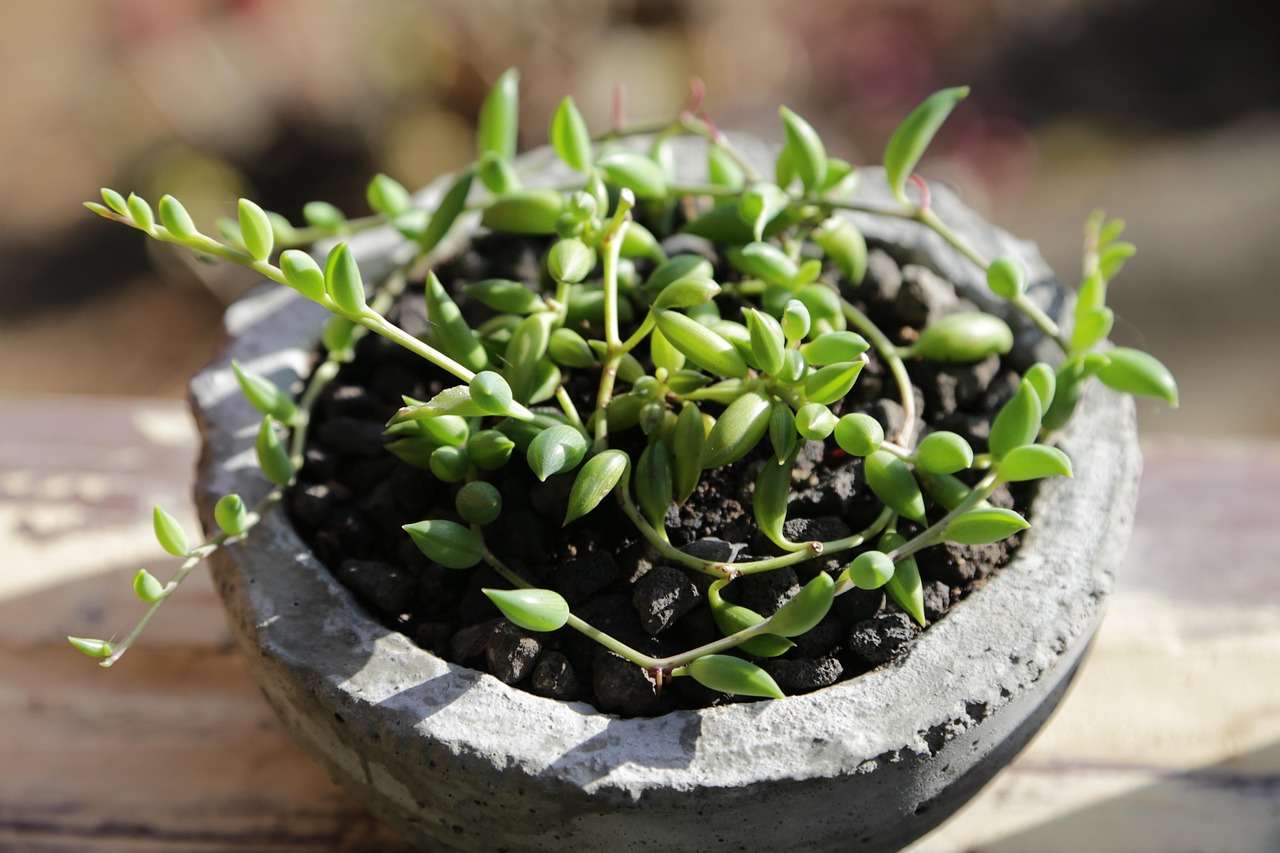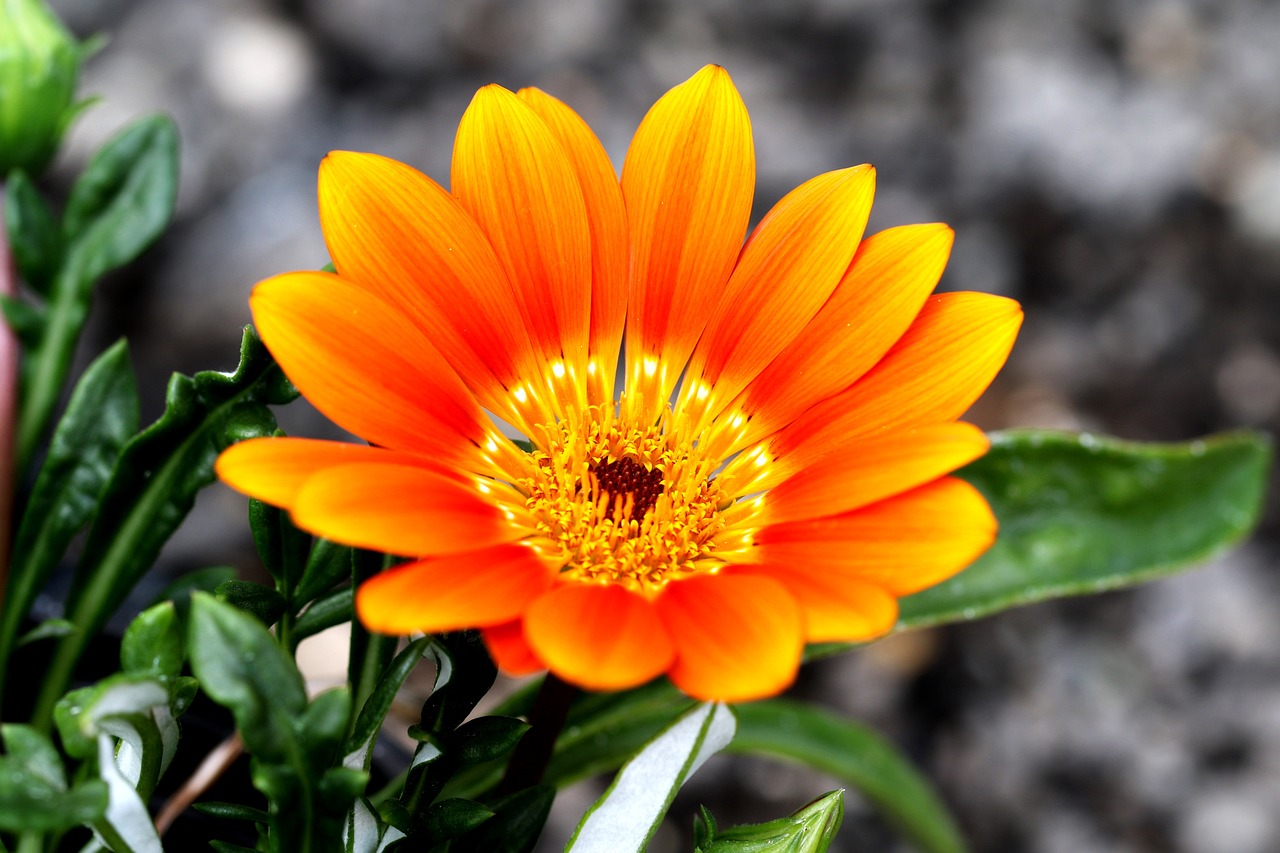Chamomile: Features and Care
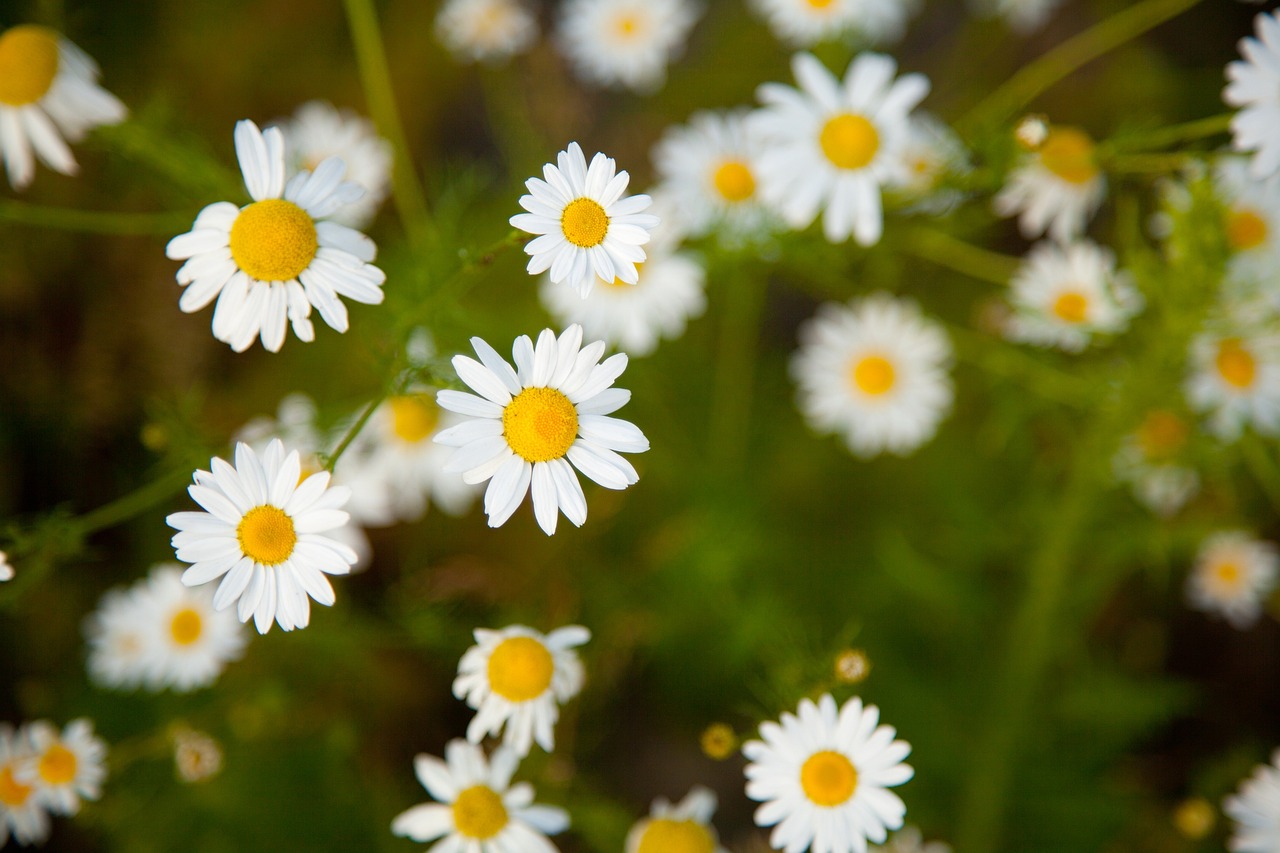
Chamomile is a plant characterized by its small, delicate white flowers, admired not only for its appearance but also for its unique fragrance. It is a common sight in European gardens, where it creates a natural and serene atmosphere when planted in yards and flower beds.
In this article, I’ll explore chamomile in detail, from its basic information to its cultural background and gardening tips.
Basic Information
- Scientific Name: Matricaria chamomilla (German Chamomile) / Chamaemelum nobile (Roman Chamomile)
- Family: Asteraceae
- Origin: Europe and Western Asia
- Appearance: Chamomile features daisy-like white petals with a yellow center. It is a compact plant, typically growing 30 to 60 cm tall, with a delicate, airy appearance. Its leaves are finely divided and soft green, giving the plant a gentle and lightweight look.
- Blooming Season: Chamomile usually blooms from May to August, thriving in cooler climates, making it particularly beautiful during the mild seasons of spring and summer.
Cultural Significance of Chamomile
Chamomile has a long history, especially in European culture, where it symbolizes “calmness” and “patience.” In England, it has been used for centuries as an accent in gardens, with “Chamomile Lawns” being especially famous. These lawns, made up of chamomile instead of traditional grass, release a pleasant fragrance when stepped on, creating a tranquil and aromatic space in the garden.
Additionally, chamomile is often used as a decorative flower in weddings and other special occasions in Europe. Its natural and rustic appearance makes it a popular choice for bouquets and floral crowns. In many European gardens, chamomile is a key part of herb gardens, complementing designs that emphasize harmony with nature.
Historical Anecdotes About Chamomile
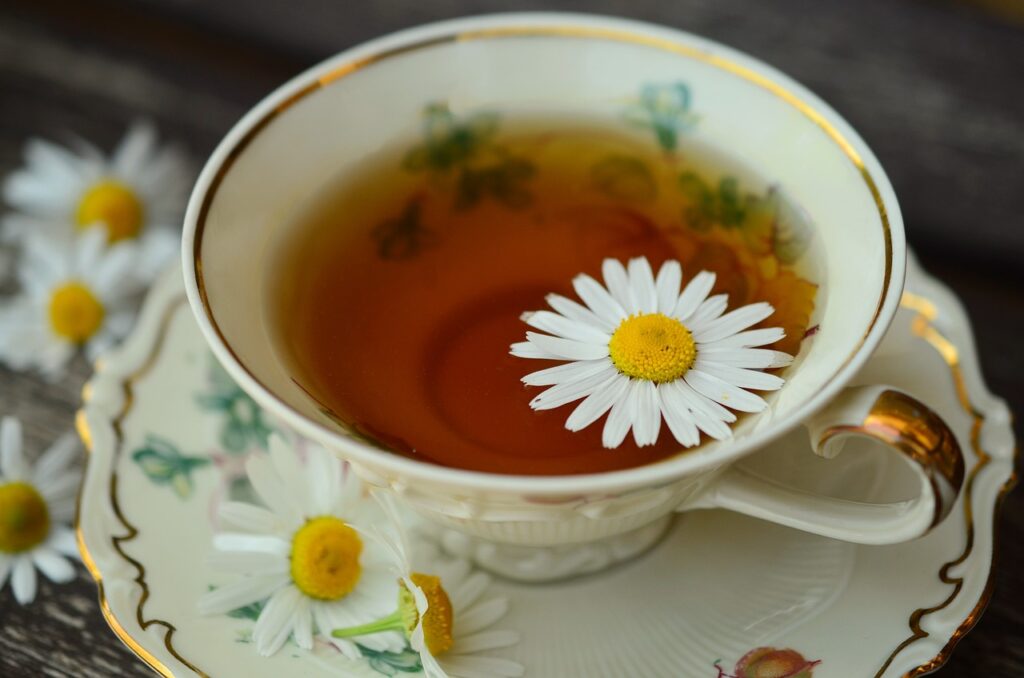
Chamomile was regarded as a sacred flower in ancient Egypt, where it was offered to the sun god Ra. It was also prized in ancient Rome and Greece for its fragrant and beautiful flowers, earning a special place in their gardens.
During the Elizabethan era in England, chamomile was widely planted in gardens. Since its scent is released when stepped on, many gardeners preferred it for pathways. In this period, chamomile was valued for both its beauty and practicality, becoming an indispensable part of garden design.
Gardening Tips
Cultivation Guide
Chamomile prefers sunny locations but can also tolerate partial shade. It thrives in moderately moist soil and is relatively drought-tolerant, making it an easy plant to grow even for beginners. Spring is the ideal time for planting, and thinning the seedlings early on helps improve airflow and prevent disease.
Water chamomile thoroughly when the surface soil is dry, but be careful not to overwater. After flowering, regularly pinching off spent blooms encourages the plant to produce more flowers, allowing you to enjoy them for an extended period.
Environment and Conditions
Chamomile thrives in well-drained sandy soil. While it can grow in acidic soil, slightly alkaline soil is ideal. German chamomile, in particular, tends to self-seed, so once established, it can bloom naturally the following year. It is also hardy, surviving winter without dying back, but be mindful of severe frost.
Conclusion
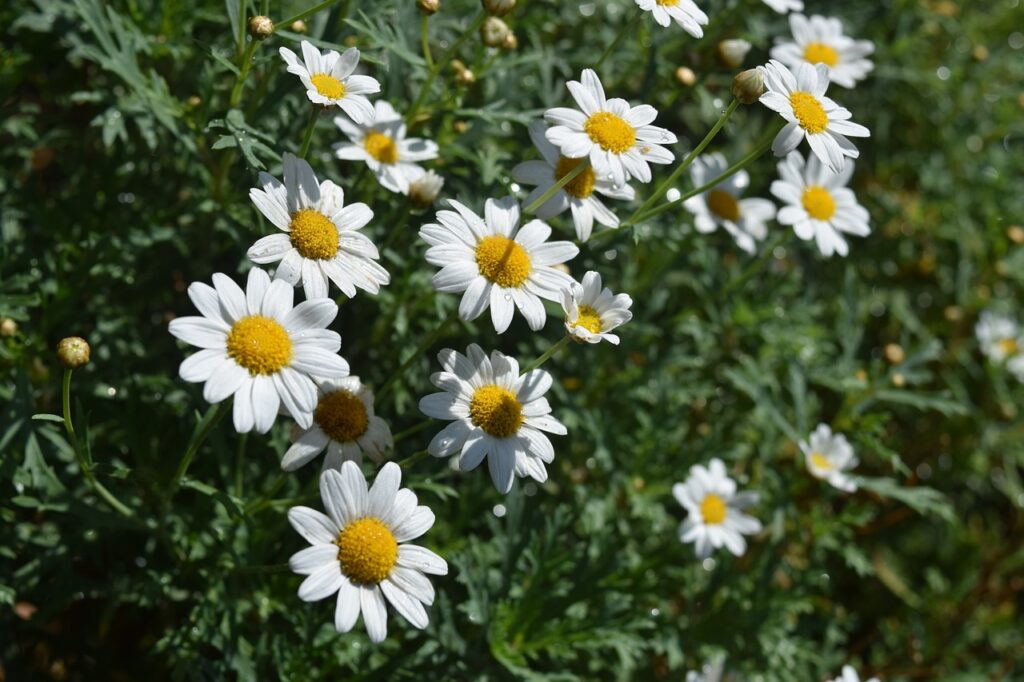
Chamomile, with its delicate and charming flowers and soothing fragrance, is beloved by many. It is widely used in European gardens and herb gardens, creating a natural and calming atmosphere.
With proper care, you can enjoy chamomile in your own garden for years to come. We encourage you to add this lovely plant to your garden and experience its beauty firsthand.


